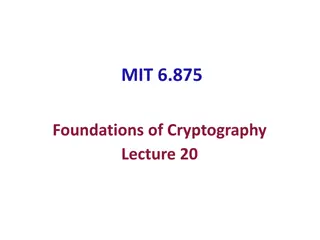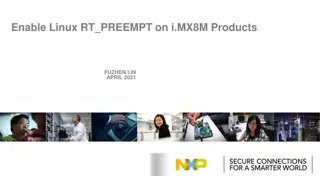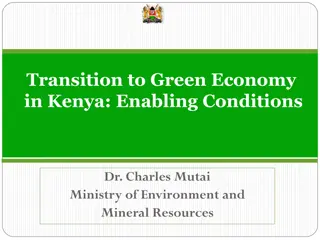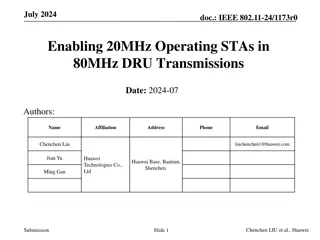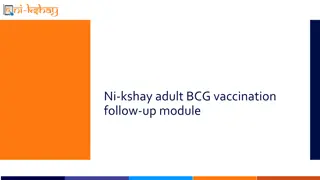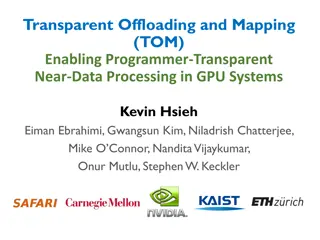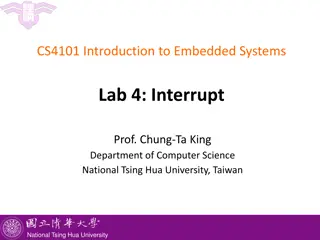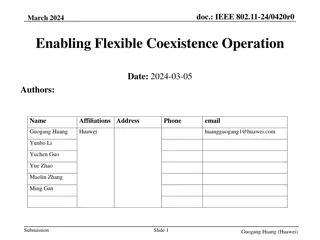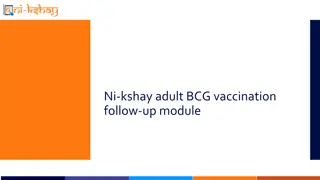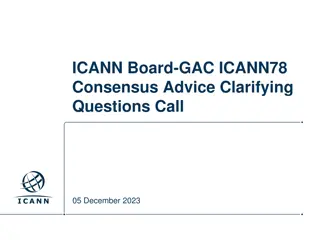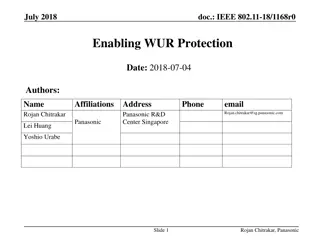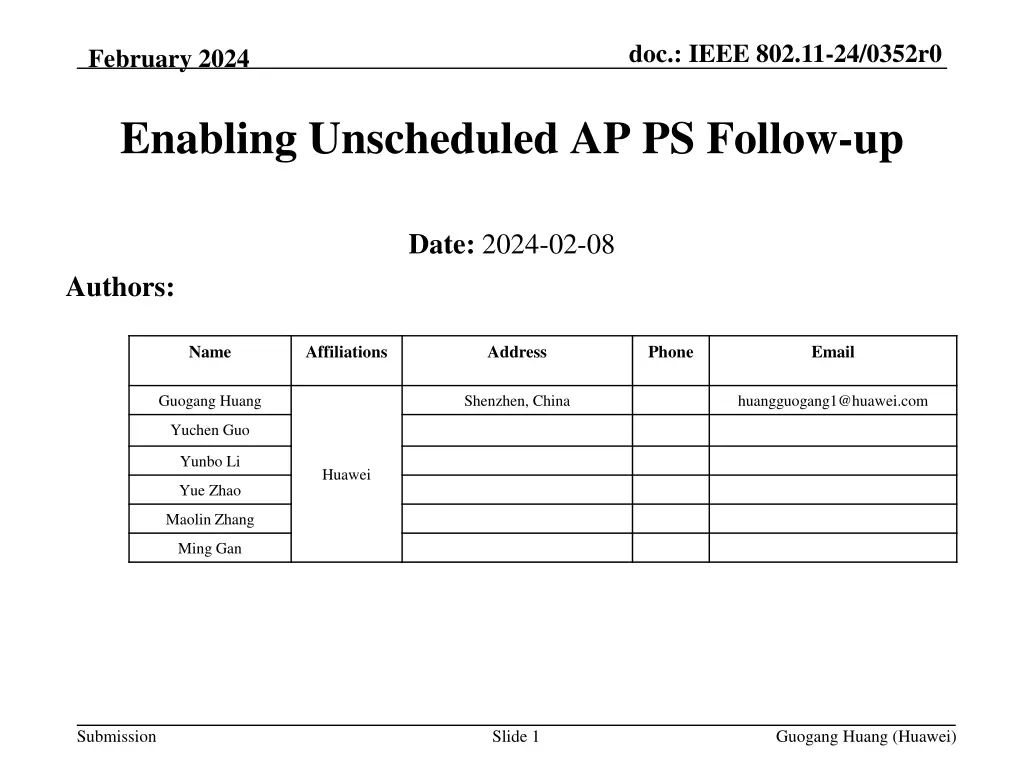
Enabling Unscheduled AP Power Save Mechanisms in IEEE 802.11-24/0352r0
Discover the proposed unscheduled AP power save mechanisms for IEEE 802.11-24/0352r0 in February 2024. Explore the benefits of reducing AP power consumption through scheduled and unscheduled approaches. Qualitative comparisons among the candidate AP power save mechanisms are provided to understand their effectiveness.
Download Presentation

Please find below an Image/Link to download the presentation.
The content on the website is provided AS IS for your information and personal use only. It may not be sold, licensed, or shared on other websites without obtaining consent from the author. If you encounter any issues during the download, it is possible that the publisher has removed the file from their server.
You are allowed to download the files provided on this website for personal or commercial use, subject to the condition that they are used lawfully. All files are the property of their respective owners.
The content on the website is provided AS IS for your information and personal use only. It may not be sold, licensed, or shared on other websites without obtaining consent from the author.
E N D
Presentation Transcript
doc.: IEEE 802.11-24/0352r0 February 2024 Enabling Unscheduled AP PS Follow-up Date: 2024-02-08 Authors: Name Affiliations Address Phone Email Guogang Huang Shenzhen, China huangguogang1@huawei.com Yuchen Guo Yunbo Li Huawei Yue Zhao Maolin Zhang Ming Gan Submission Slide 1 Guogang Huang (Huawei)
doc.: IEEE 802.11-24/0352r0 February 2024 Introduction One of the goals of UHR is to reduce the AP power consumption which is more emphasized for the AP MLD. Since power consumption increases with the number of affiliated APs. Some candidate AP PS mechanisms are discussed [1-2] Scheduled AP PS E.g. use the existing TWT mechanism to handle the periodic traffic Dynamic AP PS E.g. exchange initial Control frame to enable higher BW/NSS modes Unscheduled AP PS E.g. the non-AP MLD sends a wakeup request through the link on which the corresponding affiliated AP is operating in active mode to wake up other affiliated APs which are operating in PS mode In this contribution, we will provide qualitative comparisons among these candidate AP PS mechanisms. Submission Slide 2 Guogang Huang (Huawei)
doc.: IEEE 802.11-24/0352r0 February 2024 Recap Unscheduled AP PS [2] In order to save AP MLD power, the simplest way is to have only one link operating in the active mode and other links operating in the PS mode if the traffic load is low. All APs affiliated with the AP MLD shall announce the change on the AP power management mode in advance No need to send Beacon frame if an AP affiliated with an UHR AP MLD is in PS mode The active link (which means the AP is operating in the active mode) can address the follow potential issues Provide access service to the pre-EHT STA Provide Discovery, Active Probing, Association to EHT/UHR non- AP MLD Guogang Huang (Huawei) Submission Slide 3
doc.: IEEE 802.11-24/0352r0 February 2024 Recap Unscheduled AP PS (Cont.) [2] Once high throughput is needed, a non-AP MLD can send a request through the active link to wake up one or more affiliated APs in the PS mode with the doze state An affiliated AP in PS mode with the doze state shall enter the awake state after receiving a wakeup request for frame exchange The affiliated AP in PS mode with the awake state can switch back to the doze state if either of the following conditions is met, e.g. There is no STA who operates on this link and sets the More Data subfield of the latest frame transmitted to 1 The channel is idle for a given time This can address the case that the STA moves out of the AP s coverage area Submission Slide 4 Guogang Huang (Huawei)
doc.: IEEE 802.11-24/0352r0 February 2024 Qualitative Comparison [1] AP PS mechanism Status Inactive Periods Active Periods Inactive/Active Duration PS benefits Tx Delay Link Disablement Baseline In Disabled Links In Enabled Links (At least one link) ~ Seconds or more (order of DTIM interval) High High Scheduled AP PS UHR Candidate Outside Wake SPs Within Wake SPs ~ Tens of ms. or more Medium Medium Dynamic AP PS UHR Candidate None All None/All Medium Minimal Minimal < X < Medium Unscheduled AP PS UHR Candidate Before received at least one wakeup request From received at least one wake request to the time when there is no STA who operates on this link and sets the More Data subfield of the latest frame transmitted to 1. High Note all these AP PS mechanisms can be used only when all associated STAs and non- AP MLDs support them. Submission Slide 5 Guogang Huang (Huawei)
doc.: IEEE 802.11-24/0352r0 February 2024 Unscheduled AP PS The proposed unscheduled AP PS mechanism can be used in combination with the scheduled AP PS mechanism. For the sake of simplicity, the AP only can be operating in the dynamic AP PS mode or the unscheduled AP PS mode. An AP affiliated with an AP MLD can announce its power management mode change through the Reconfiguration Multi-link element of the Beacon frame. E.g. a 2-bit AP Power Management subfield AP Power Management subfield value AP Power Management Mode 0 Active mode 1 Dynamic AP PS mode 2 Unscheduled AP PS mode 3 Reserved Submission Slide 6 Guogang Huang (Huawei)
doc.: IEEE 802.11-24/0352r0 February 2024 Conclusions We have provided qualitative comparison among different AP PS mechanisms, i.e. link disablement, scheduled AP PS, dynamic AP PS and unscheduled AP PS The proposed wakeup-based unscheduled AP PS mechanism can maximize power save while minimizing the transmission delay of the traffic. Submission Slide 7 Guogang Huang (Huawei)
doc.: IEEE 802.11-24/0352r0 February 2024 References [1] 11-23-2040-00-00bn-enabling-ap-power-save-follow-up.pptx [2] 11-23-0225-00-0uhr-considering-unscheduled-ap-power-save.pptx Submission Slide 8 Guogang Huang (Huawei)
doc.: IEEE 802.11-24/0352r0 February 2024 SP 1 Do you support to define a mechanism that allows an AP which is affiliated with an AP MLD may operating in the active mode with the awake state or the PS mode with the awake state or the doze state? Yes: No: Abstain: Submission Slide 9 Guogang Huang (Huawei)
doc.: IEEE 802.11-24/0352r0 February 2024 SP 2 Do you support to define a mechanism that allows the non-AP MLD to send a wakeup request through an enabled link on which the affiliated AP is operating in active mode to wake up the AP which affiliated with the same AP MLD and is operating in the doze state of the PS mode? Yes: No: Abstain: Submission Slide 10 Guogang Huang (Huawei)


